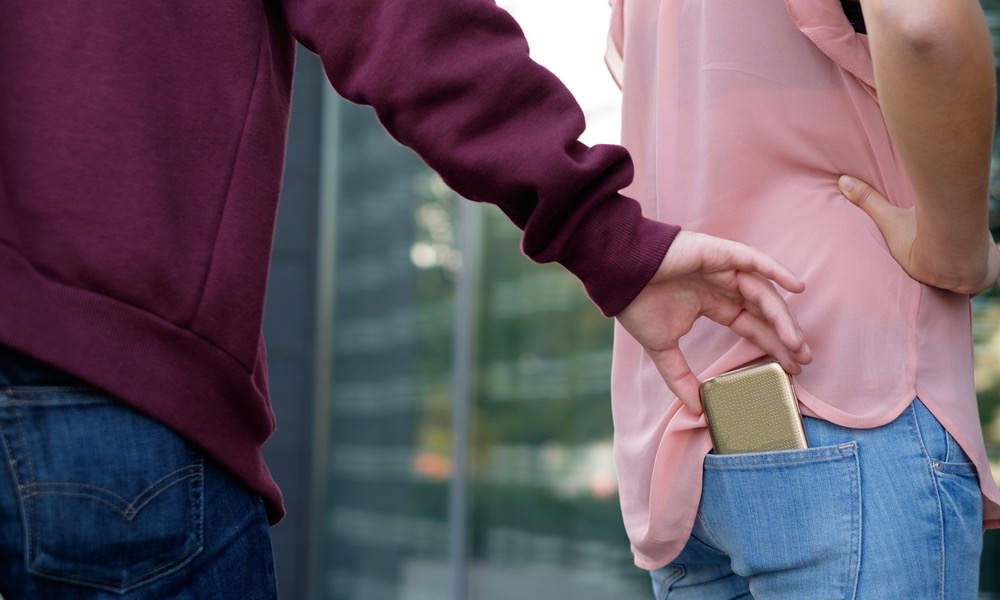The Ultimate Anti-Theft Feature in London? Owning an Android
 Tommaso79
Tommaso79
Toggle Dark Mode
In October, iDrop News reported that London thieves are brazenly snatching smartphones out of users’ hands on city streets in increasing numbers, with nearly 300 phones being stolen every day. Now it seems those thieves have a definite preference for which brand of smartphones to steal.
We’ve written plenty about smartphone users’ buying habits and preferred platforms, but we haven’t discussed the preferences of London street thieves. We can’t provide exact numbers for which smartphone is the most popular among the bad actors of the world, but we can give you a big hint — straight from a crook’s mouth:
“Don’t want no Samsung.”
As we’ve reported in the past, device snatching is growing rapidly on London streets and has even earned a nickname — “Apple picking” — because thieves overwhelmingly go for iPhones over any other major brand.
As reported by London Centric (via AppleInsider), thieves are showing a clear preference for iPhones, leaving “rejected” Android owners with feelings that range from relief to insult.
One victim, Mark, reports he was sitting outside his workplace in Hackney when he heard an approaching e-bike. Before he realized what was going on, the bike-riding thief had snatched his Android phone from his hands and was in the process of making his escape. It was at that point that Mark experienced a strange sort of snub.
“I saw him stop, look at my phone, then throw it on the floor. He cycled off and I retrieved my phone,” Mark told London Centric.
Luckily, there was no damage done to Mark’s phone, only to his ego.
“If anything, I feel a bit rejected. My poor phone.”
Sadly, not all thefts are harmless “snatch-and-drop” incidents. Another victim, Sam, told the publication about a group of eight thieves that roughed him up outside a Royal Mail depot in south London back in January. As he passed the depot, the gang blocked his path.
“I tried to move to let them pass, but the last guy blocked the path,” said the 32-year-old. “They started pushing me and hitting me, telling me to give them everything.”
The group then proceeded to relieve Sam of all his belongings, right down to the beanie hat on his head.
Once Sam handed everything over, the thieves prepared to make their escape. However, before they fled the scene, one of the men turned back and handed Sam his phone.
“Don’t want no Samsung,” the thief said.
While the City of London police or the Metropolitan police don’t keep exact figures on the smartphone preferences of thieves, both security experts and Android owners have noticed a clear trend toward the iPhone.
In another tale of bruised pride, an Android user recounts how he didn’t realize his phone was about to be stolen until the potential thief decided his phone wasn’t worth stealing.
Simon says a friendly chap approached him and asked if he had Spotify on his device. Simon replied trustingly, “Yes,” thinking the individual was a local musician who wanted to share his music.
However, as Simon pulled out his phone — a Samsung Galaxy — the man immediately lost interest and walked off. Only then did Simon realize that he had been the target of a potential mugging.
Apple’s iPhone holds its value significantly better than most Android models, making it worth more on the black market, both for complete handsets and parted out. This makes iPhone users a more enticing target than Android owners.
Thieves’ preferences for the iPhone aren’t a recent phenomenon. Back in 2011, Mactrast reported that muggers in New York City were refusing to steal Android phones and BlackBerrys (remember them?) and waiting instead for the opportunity to score an iPhone.
In one instance, a pair of would-be robbers proved rather picky about what they would steal. The suspects demanded that the victims hand over their iPhones. While the first victim had an iPhone and complied, the second only had a Droid. The thieves apparently didn’t want a Droid — so they took the victim’s cash instead.
For Android users in London, it seems there’s still a silver lining to having lower resale value: safety.








